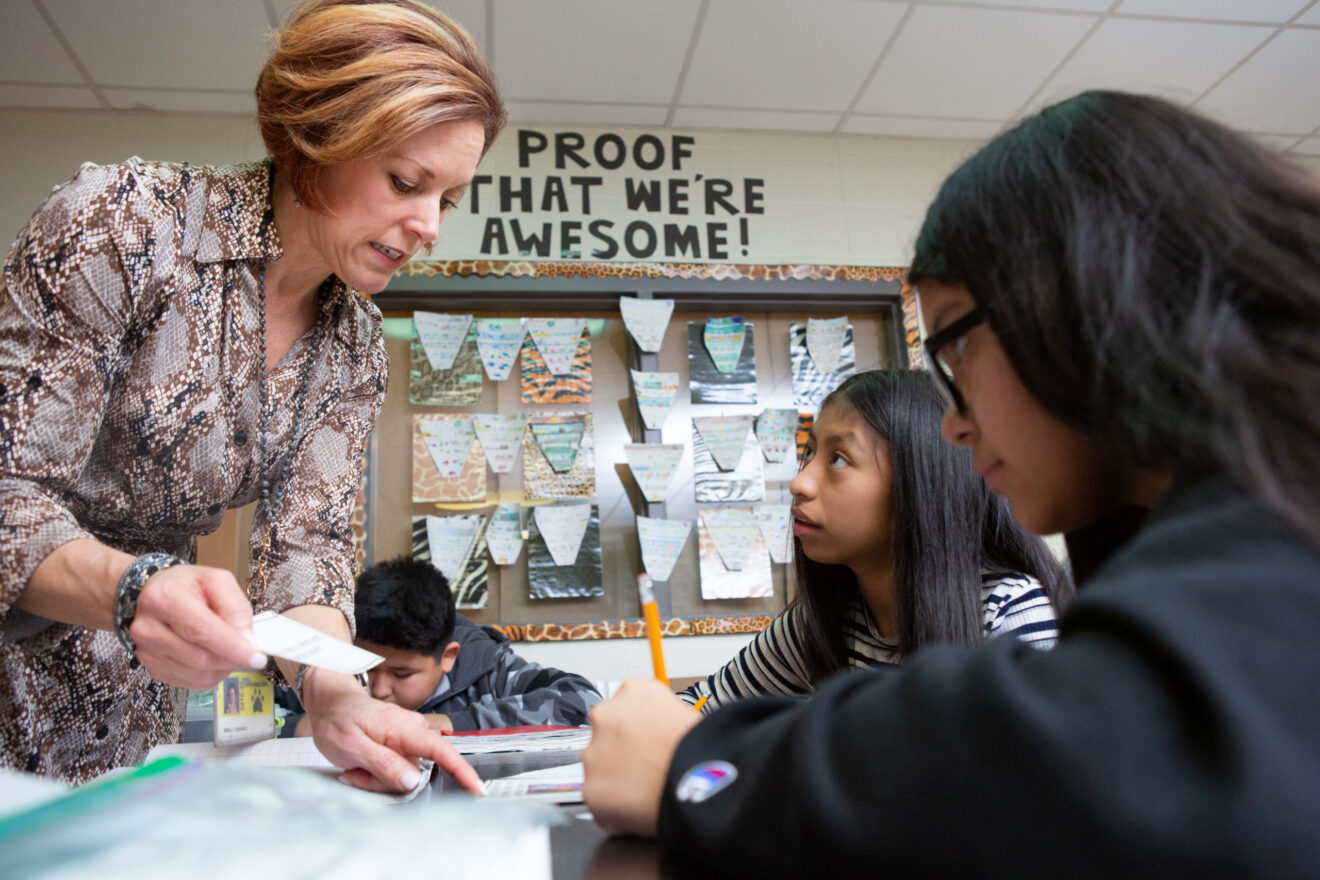This is the first article in a series of three about creating positive learning environments in schools. The second part is about managing student behavior, and the third part discusses building a resilient staff.
Students spend a significant amount of time in the classroom with their teachers and peers. In fact, students spend an average of 6.64 hours each day in the classroom for 180 days each year — making it crucial that schools and districts create a positive school climate where all students, no matter their backgrounds, feel welcome. Yet, fostering a positive school climate often feels like a constantly shifting equation. How can we ensure the environment these students spend so much time in is a positive one? In doing so, we must realize that what we have the most control over is ourselves. You cannot control the way your learners behave, but you can control your own behavior and reactions.

This idea is the cornerstone of the training I provide as an instructor at the Crisis Prevention Institute. A successful schoolwide approach to creating a positive school climate must focus on prevention and de-escalation built on proven strategies, professional guidance and collaborative planning. Here are three key strategies to foster a positive school environment.
1. A positive climate starts with the adults
Educators well know that they cannot always control the way their students behave, but they can control their own behavior and reactions, knowing they can influence those around them.
That effect is the integrated experience. Your anxiety can bring forward your students’ anxiety. But equally as important, your calm demeanor can encourage their calm, focused behavior. When adults know how to stay in their “thinking brains” rather than their “emotional brains” and use every interaction to help students feel welcome, it allows teachers and staff to cultivate discipline practices that are preventative and relational.
Learning how to accurately interpret and appropriately respond to disruptive and challenging student behavior can help you make constructive choices that benefit your entire classroom and school. Policies aimed at fostering a positive climate should consider that students can be more resilient in their personal responses when adults are authentic and honest about what lies beneath behaviors.
This means that if we, as adults, know that it is hard to sit still or to remain quiet when we have a lot to say, it’s much more genuine for the adults in a school to remind students of structures than to simply shut them down.
An adult might remind a student, “If we can work independently on this assignment, we will have a chance to work with partners later; but if we can’t work independently right now, we may not get to that opportunity.”
Helping students to see positive outcomes can be much more beneficial than simply telling a student to finish an assignment or to remain quiet during an activity. If the adults in the room understand and can empathize with a student’s behavior and the reasons for that behavior, we can help them to see the result of positive behavior they may not otherwise be able to see.
2. “Felt safety” is central to a positive climate
Many of the dysregulated behaviors we observe in classrooms, schools and districts have one thing in common: fear. It can be immediate, such as feeling threatened by a bully, or built up over time in instances of chronic unpredictability. Our bodies remember, even if we don’t, the perceived loss of control and power brought on by unsafe relationships and environments.
Those implicit memories can trigger a nervous system response that protects us, but also shuts down other functions of the brain impeding our ability to think clearly, regulate emotions, pay attention and activate curiosity and creativity — all of which are critical to getting the most out of a day at school.
While some sources of fear — such as a bully in a classroom — are obvious, others aren’t as clear. For instance, past trauma may cause a student to have many fears related to independence and choice. When a teacher is deciding if a student can speak or get a drink, it can create a structure where students feel trapped and dependent on another person’s mood or whims. Similarly, students may be fearful of being embarrassed by a teacher who might require them to speak or perform in some way in front of their fellow classmates. In my experience, students can feel as if their participation is not an option when called on by their teacher, which can create a constant state of fear or anxiety.
Building an environment of “felt safety” needs to start with acknowledging that students, educators and staff are bringing their fears with them each day when coming to school. We must strive to create a space that alleviates those feelings of fear through individual behaviors and systemwide policies with the understanding that felt safety has different levels of meaning from person to person. For some students, felt safety means several hours away from the chaos of home life. For others, it’s a place where they can truly be themselves.
To create an environment that truly incorporates felt safety, leaders must prioritize the mental and emotional well-being of others. Along with curriculum and content plans, educators must consistently prioritize the needs of their students — such as modeling healthy relationships and letting students know that they belong.
One way to help students to feel like they belong is to give them choices. For example, a teacher might ask a student, “Would you like to write your response on the board, or would you like to write your response on your paper to show only me?” Teachers can even incorporate student choices as whole-class activities. For instance, a student might be asked, “Would you like to share your answer, or should we all share our answers with a partner first and then share what our partners think?”
Utilizing “choice” in the classroom allows students to maintain a level of independence and control, thereby avoiding anxiety and fear that might otherwise be present.
3. Consistency builds positivity
Disruptive behaviors can be a challenge for even the most experienced teachers and staff. It’s vital to establish a foundation of best practices that puts everyone in a classroom and school on the same page.
I recommend first determining where you stand before creating a path to where you want to be, starting with a school climate survey. There’s always the chance for biases to creep into surveys through unintentionally promoting specific responses or signaling out groups of students. But including students, staff and families in your gathered responses will help you better understand your existing school climate and how you can best build the one you’re striving for.
After gathering responses, establish common values centered around courtesy and respect, and assess the physical environment that surrounds all the stakeholders present in the school. Are your hallways and classrooms clean? Is there adequate lighting? Do the speaker systems work well? All of these elements and more contribute to the perceived environment you’re building. Once you’ve reviewed your environment, outline plans and expectations and establish the necessary policies and procedures to bring these plans to life.
Lastly, provide professional development opportunities, and reinforce the importance of building consistency in responses. Educators and staff come ready to educate students on curriculum, but continued training to build effective skills to prevent, respond and de-escalate disruptive behavior further supports educators and staff in fostering positive learning environments. A full staff trained in the same de-escalation strategies creates consistency for all students, and learning new skills from professionals who’ve been in their shoes builds confidence — ensuring everyone has the tools to build a welcoming, positive environment for all.
Kevin Mabie, Ed.D., is a global professional instructor at the Crisis Prevention Institute with over two decades of experience as a teacher and principal. His work with CPI and the National School Reform Faculty has allowed him to work with hundreds of educators and act on his mission to positively affect those working in schools today.
Opinions expressed by SmartBrief contributors are their own.
_________________________
Subscribe to SmartBrief’s FREE email ASCD newsletter to see the latest hot topics in education. It’s among SmartBrief’s more than 250 industry-focused newsletters.
